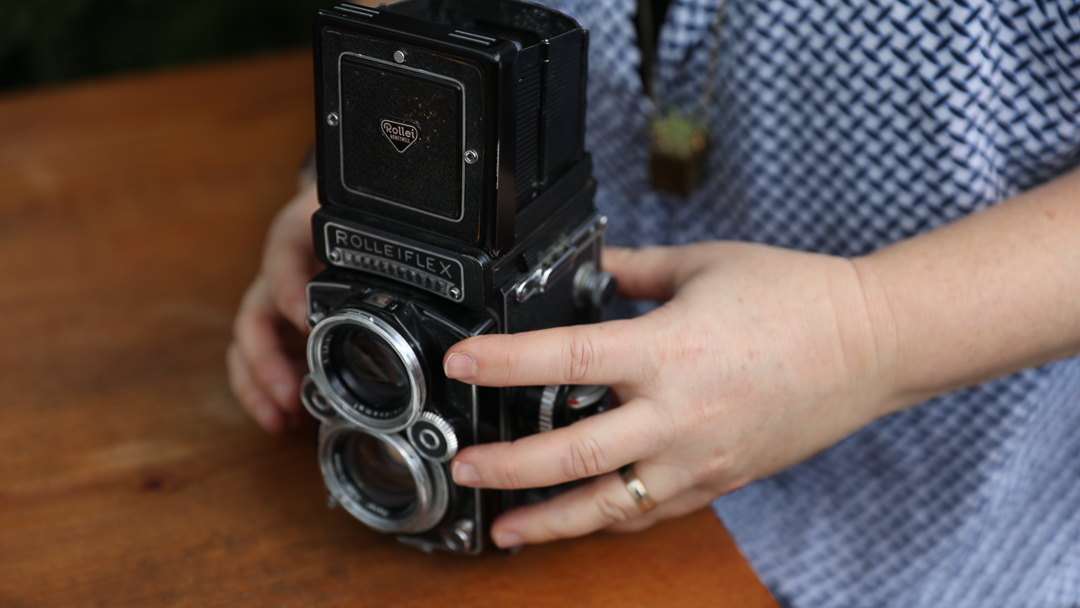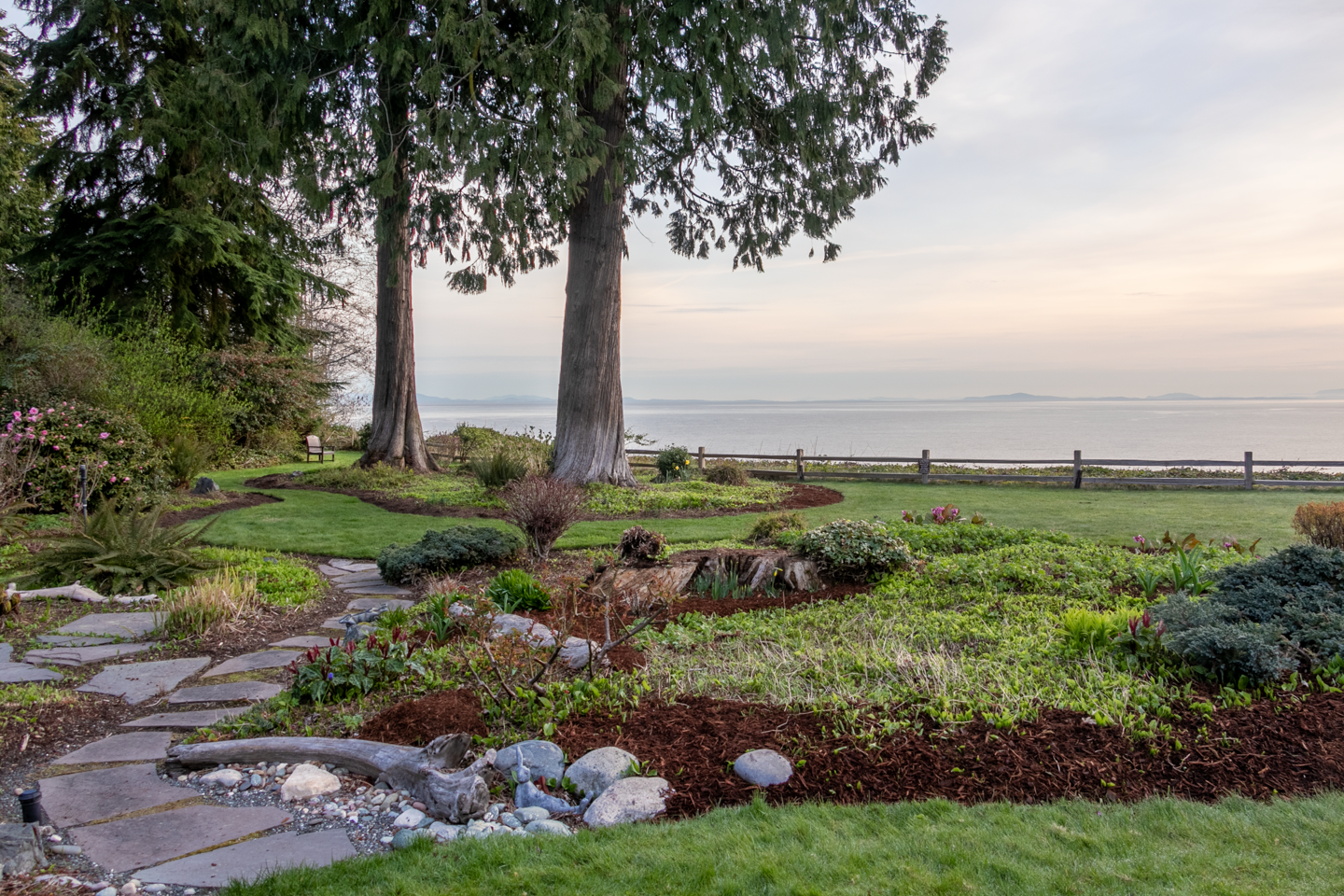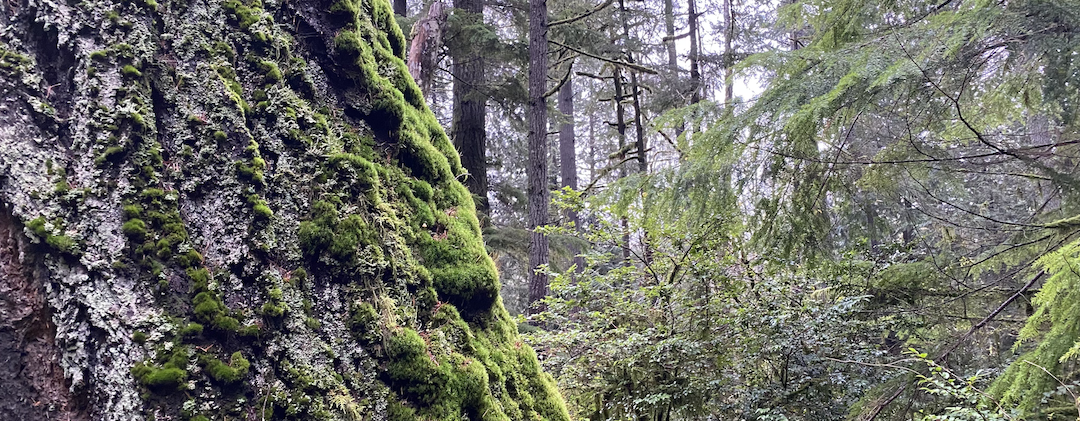Majestic Trees
We started our tour at the central Austin Public Library which has a lovely rooftop garden featuring mature trees (see their virtual tour). I think this might be an Prosopis (Locust), but can’t confirm it from my notes. I love how it’s nestled into limestone outcroppings.

Another impressive tree I saw everywhere were these wonderful Live Oaks, Quercus virginiana, providing shade and patterns. This one was in Pam Penick’s garden, and I loved the silver balls that also cast reflections and patterns.

At Jenny’s Rock Rose garden, the native trees and Agaves outside the garden frame the rocky rain-garden channels.

Plant Communities
Jenny is also the Master of building plant communities. I would need a wildflower book to name them all, but I loved how they all tumbled together.

The most glorious plant combinations were of course at the Lady Bird Johnson Wildflower Center. Although we were a few weeks after the Bluebonnets, these were still wonderful.

Specimen Plants
Particularly impressive were the yuccas, even in the rain.

A stroll a few days after the deluge, allowed us to see the Coreopsis blooms in full glory with a happy Colias philodice, the sulfur butterfly:

And masses of the Poppy Mallow, Callirhoe involucrata

This glorious Dyckia caught my eye, so stunning against the wall. Possibly ‘Black Gold’?

And no list of Texas blooms should omit the Hesperaloes, which we saw everywhere, even in the Texas-sized city planters!








2 Responses
Grace, it’s a treat to see Austin’s gardens through your lens! The trees definitely captured bloggers’ imaginations — they are indeed twisty-limbed and pervasive. (The trees, that is. No comment on bloggers’ imaginations.) If I may, the aloes you photographed are actually a dyckia and, in the city planter, a hesperaloe (looks like an aloe but is more closely related to a yucca). The hesperaloes were putting on a great show, weren’t they?
Thanks for your expert eye; I will make those changes in the article!